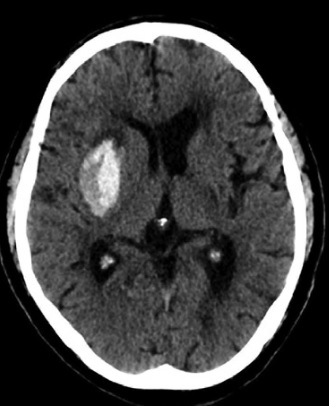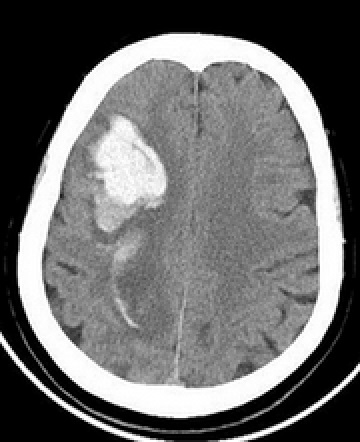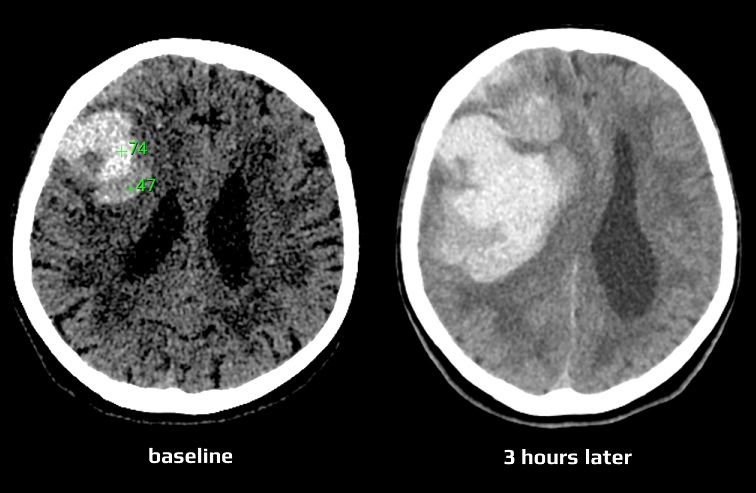Blend sign
Updated on 21/04/2024, published on 25/02/2023
- early hematoma growth is observed in approximately one-third of the patients with spontaneous intracerebral hemorrhage (ICH)
- the blend sign (BS) on baseline non-contrast computed tomography (NCCT) is a marker of increased risk of hemorrhage progression and a predictor of poor outcomes in patients with ICH
 [Li, 2017] (Schreiber, 2023)
[Li, 2017] (Schreiber, 2023)
- blend sign is not associated with poor outcomes in patients with hypertensive ICH after stereotactic minimally invasive surgery (sMIS) (Yang, 2021)
- the blend sign has a good correlation with the spot sign, the latter being more sensitive and reliable, but it requires the administration of a contrast agent [Sporns, 2017]
- blend sign and black hole sign can help predict outcome when CT angiography is unavailable
| Blend sign specifications |
|






